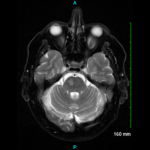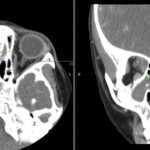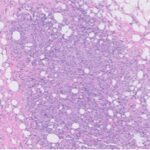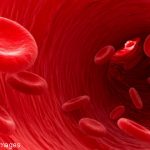The 19th Annual Johns Hopkins Advances in the Diagnosis and Treatment of Rheumatic Diseases Symposium session titled, Updates on Vasculitis provided an overview of the latest information on vasculitis diagnosis and treatment.


The 19th Annual Johns Hopkins Advances in the Diagnosis and Treatment of Rheumatic Diseases Symposium session titled, Updates on Vasculitis provided an overview of the latest information on vasculitis diagnosis and treatment.

David L. Leverenz, MD, MEd |
RheumMadness is an online tournament in which a bracket of teams, representing key learning concepts in rheumatology, compete against each other in a series of head-to-head matchups, much like basketball teams in the NCAA’s March Madness. The 2023 tournament theme was The All Star Season. Each team represented one all star article competing to be…

Jessica Meek, MD, Anna Coppinger, DO, & Sejal Khan, DO |
Thromboembolic events are major contributors to the morbidity and mortality of patients with giant cell arteritis (GCA), but little is known about how GCA may increase the risk of ischemic strokes. GCA-related stroke is described as an ischemic cerebral infarct occurring within three to four weeks of GCA diagnosis and treatment. It occurs in 3–7%…

Adil Vural, MD, & Kinanah Yaseen, MD |
Granulomatosis with polyangiitis (GPA) is a primary, necrotizing granulomatous vasculitis, involving small- to medium-sized arteries, that causes systemic disease. Almost any organ can be affected, but the most affected systems are the upper airways, lungs, kidneys, eyes and peripheral nerves. Migratory polyarthritis is reported in approximately 25% of patients with anti-neutrophil cytoplasmic antibody (ANCA) associated…

Geoffrey E. Thiele, MD, & Sara Haro, MD |
Granulomatosis with polyangiitis (GPA) is a type of anti-neutrophil cytoplasmic antibody (ANCA) associated small vessel vasculitis that typically affects the kidneys, lungs and sinuses.1 Due to an overlap in signs and symptoms, GPA may initially be difficult to distinguish from IgG4-related disease, another condition that can affect multiple tissues and has variable presentations. Further complicating…

Branden Ireifej, MD, Lea Meir, MD, Emily Gutowski, MD, Hansen Lam, MD, & Wei Wei Chi, MD |
The terrorist attacks on the Twin Towers at the World Trade Center (WTC) that led to their destruction on Sept. 11, 2001, as well as the subsequent year-long cleanup of the site (i.e., Ground Zero) in 2001 and 2002, not only had immediate implications for the lives and health of thousands of individuals at the…

Vania Lin, MD, MPH, Rebecca Johnson, MD, & Lisa Suter, MD |
Polyarteritis nodosa (PAN) is a necrotizing vasculitis, predominantly involving medium-sized arteries, that causes systemic disease, and, less commonly, cutaneous-limited disease. The population prevalence for PAN ranges from 2 to 33 per million.1-3 Estimates vary due to the increased recognition and classification of other forms of vasculitides over time and variation in the regional prevalence of…

Michael Putman, MD |
In 2021, the ACR—in concert with the Vasculitis Foundation (VF)—released four new vasculitis guidelines, one each on: 1) anti-neutrophil cytoplasmic antibody (ANCA) associated vasculitis, 2) giant cell arteritis (GCA) and Takayasu arteritis, 3) polyarteritis nodosa and 4) Kawasaki disease. The guideline development process is complex. For the vasculitis guidelines, this process kicked off in June…

Brendan Antiochos, MD, provided a timely update on research and treatments related to vasculitis, addressing treatments for ANCA-associated vasculitis and giant cell arteritis, COVID-19 vaccination and more.

In this EULAR 2022 session, new & revised treatment recommendations for ANCA-associated vasculitis, axial spondyloarthritis & rheumatoid arthritis were presented.